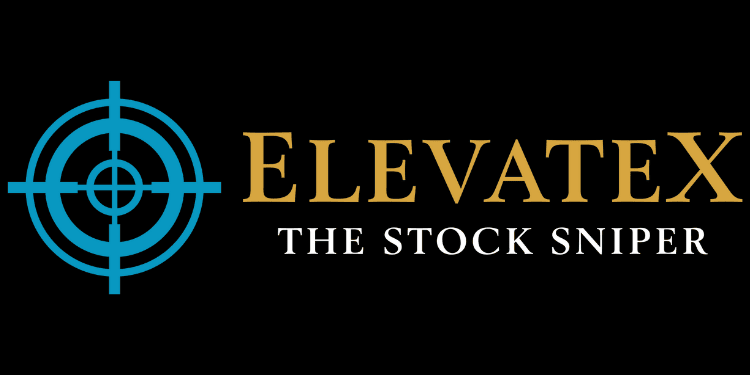- Live Life Grow Wealth
- Posts
- 📊 Series 7 Day 6: How to Value a Company (DCF, P/E & Relative Valuation Simplified)
📊 Series 7 Day 6: How to Value a Company (DCF, P/E & Relative Valuation Simplified)

Today’s Headline
📊 Series 7: Understanding Company Fundamentals
Day 6: How to Value a Company (DCF, P/E & Relative Valuation Simplified)
Have you ever looked at a stock and wondered… “Is this price expensive or cheap?”
I used to feel the same way. I saw numbers everywhere. Ratios. Charts. Valuation models.
But inside, I kept asking myself a simple question: How do I know if a company is truly worth buying?
Today, I want to break this down in a way that even a 12-year-old could understand.
Because investing does not have to be complicated.
It only becomes complicated when people use big words to describe simple ideas.
So let’s strip everything down and learn the three main ways to value a company:
DCF (Discounted Cash Flow) – What’s the business worth based on future cash.
P/E Ratio (Price-to-Earnings) – How much investors pay for each dollar of profit.
Relative Valuation – Comparing a company against others in the same industry.
By the end, you’ll be able to look at any stock with clearer eyes and a much calmer mind.
“Want smarter investing? This AI-chatbot tool turns website traffic into actionable data—see how it can sharpen your edge and boost your portfolio.”
Is your Shopify Brand ready for Agentic Commerce this Q4?
Agentic Commerce is transforming ecommerce.
Zipchat.ai is the AI Agent built for Shopify brands — converting visitors, recovering carts, and automating support 24/7. Trusted by Police, TropicFeel, and Jackery, it works whether you have 10k visitors/month or millions, so you can win Q4 without extra headcount.
Use code NEWSLETTER10 for 10% off forever.
1. Understanding Why Valuation Matters
When you buy a stock, you're not just buying a ticket in a casino.
You’re buying a slice of a business.
And every business has a value, just like a house, car, or even a collectible.
If you pay too much, even a great company can give you poor returns.
But if you buy a strong company at a fair or cheap price, the odds tilt in your favor.
Valuation is like a flashlight in a dark room.
It doesn’t guarantee success, but it helps you avoid walking into walls.
2. Valuation Method #1: DCF (Discounted Cash Flow) — The “True Value” Method
DCF sounds scary at first, but the concept is simple:
A business is worth all the cash it can make in the future… brought back to today’s value.
Let me explain this like I'm explaining it to my younger cousin.
Imagine someone promises you:
$10 next year
$10 the following year
$10 the year after
And imagine the bank gives you 4% interest a year.
You wouldn’t say that the future $10 is worth the same as $10 today.
Because if you had $10 today, you could grow it in the bank.
That is what DCF does.
It tries to find the present value of future money.
How DCF works in very simple terms:
Estimate how much cash a company will make in the future.
Adjust those future cash amounts back to today’s value.
Add all the discounted cash amounts together.
Compare that number with the current market price.
If the company’s stock price is below the DCF value → it might be undervalued.
If it's above the DCF value → it might be overpriced.
DCF is powerful because it forces you to think like an owner, not a trader.
Where DCF shines:
Stable businesses
Companies with predictable cash flows
Long-term investing
Where DCF can mislead:
When future cash flow predictions are unrealistic
When used for fast-changing industries
When interest rates fluctuate wildly
DCF is a great tool, but you must use it with common sense.
3. Valuation Method #2: P/E Ratio — The “Shortcut” Valuation
If DCF feels too heavy, the P/E ratio is like the quick test.
P/E = Price of the stock ÷ Earnings per share
It tells you how much you’re paying for each dollar of profit.
For example:
If P/E = 10 → you're paying $10 for $1 of profit
If P/E = 30 → you're paying $30 for $1 of profit
That’s it. Straightforward.
How to use P/E wisely:
A company with:
Low P/E may be cheap
High P/E may be expensive
But context is everything
Just like you can’t compare the price of an apple to a computer,
you should not compare the P/E of a tech company to a manufacturing company.
High P/E usually means:
Investors expect high growth
Company has strong brand power
Business model is scalable
Low P/E usually means:
Slower growth
Company is facing risk
Industry is declining
Business is stable but boring
P/E is simple, but it’s also powerful when used with logic.
Unlock a New Revenue Stream with Strategic Outdoor Ads
Investors know the importance of reaching untapped markets—and that’s exactly where AdQuick shines. This platform simplifies the process of buying billboard and outdoor ad space, making it easy to launch targeted campaigns that generate brand awareness and ROI—without the traditional hassle.
If you want to explore an under-the-radar advertising channel that impacts both consumers and decision-makers, this could be your next portfolio diversifier.
Modernize your marketing with AdQuick
AdQuick unlocks the benefits of Out Of Home (OOH) advertising in a way no one else has. Approaching the problem with eyes to performance, created for marketers with the engineering excellence you’ve come to expect for the internet.
Marketers agree OOH is one of the best ways for building brand awareness, reaching new customers, and reinforcing your brand message. It’s just been difficult to scale. But with AdQuick, you can easily plan, deploy and measure campaigns just as easily as digital ads, making them a no-brainer to add to your team’s toolbox.
4. Valuation Method #3: Relative Valuation — The “Compare to Your Neighbours” Method
If you're unsure whether a company is cheap or expensive,
compare it with others in the same neighborhood.
This is called relative valuation.
It’s like comparing house prices on the same street.
You don’t compare a condo to a bungalow.
You compare condo to condo.
You can compare:
P/E ratios
P/S ratios
Profit margins
Revenue growth
Debt levels
Cash flows
When comparing, you ask:
Is this company better or worse than its competitors?
If it’s better, does the price reflect that?
Relative valuation allows you to understand how the market values businesses that are similar.
It’s a simple way to spot deals or avoid overpriced stocks.
5. Combining These Methods — My Personal Strategy
Over the years, I've learned that no single valuation method is perfect.
But when you combine them, things get clearer.
Here’s how I personally do it:
Step 1: Start with P/E for a quick feel.
If something looks too high or too low, I pay attention.
Step 2: Compare it with competitors.
If it’s the same as the industry, I dig deeper.
If it’s an outlier, I ask why.
Step 3: Use a simple DCF to check long-term value.
This helps me avoid emotional decisions.
Step 4: Check debt and cash flow stability.
Valuation is meaningless if the company cannot survive.
Step 5: Decide if the stock is worth the risk.
A cheap stock is not always good.
A high-priced stock is not always bad.
It depends on the future.
This process protects me from hype and fear.
6. Why Most People Get Valuation Wrong
Most people do not fail at investing because they lack intelligence.
They fail because they want shortcuts.
They chase the hottest ticker.
They buy because their friend said so.
They ignore valuation because it’s “boring”.
But boredom builds wealth.
Excitement destroys portfolios.
Valuation is boring.
But it works — if you're patient.
7. A Simple Way to Practice Valuation (Even if You're New)
If you want to train your valuation muscle, start simple.
Pick 3 companies you like.
Maybe:
A bank
A tech giant
A consumer brand
Do this for each one:
Write down the P/E
Compare that P/E with similar companies
Do a very basic DCF estimate (even rough numbers help)
The goal is not to be perfect.
The goal is to become familiar.
Valuation is a skill.
Like swimming or cycling, you get better with practice, not with theory.
8. The Emotional Side of Valuation
Let me share one truth that investors rarely admit:
Valuation is emotional.
You can do all the calculations.
You can get all the numbers right.
But when the market drops, fear whispers in your ear.
And when the market rallies, greed tells you to buy at any price.
This is why valuation is not just about numbers.
It’s about discipline.
Valuation gives you a logical anchor when emotions try to push you around.
9. My Final Thoughts on Valuing Companies
Knowing how to value a company gives you confidence.
It gives you clarity.
It helps you invest with a long-term mind, not a short-term heart.
You don’t need to be a finance expert.
You don’t need complex spreadsheets.
But you do need a framework — and now you have one.
Remember these truths:
A great company can be a bad investment if bought at the wrong price.
A boring company can make you rich if bought at a good price.
Valuation helps you see the difference.
As long as you stay curious and consistent, you will become a smarter investor.
Final Takeaways
Before buying any stock, always ask:
“What is this business truly worth?”
Not what the price is.
Not what the news says.
Not what social media is hyping.
Your job as an investor is simple:
Find good companies.
Pay fair or cheap prices.
Hold long enough for value to be realized.
This is how wealth is built — quietly, slowly, and steadily.
📢 Call to Action
If today’s lesson helped simplify valuation for you,
I want you to pick one company you are curious about.
Apply the three methods:
Check the P/E
Compare it with competitors
Do a simple DCF
Then send me a message in the comments or reply to this email and tell me what you discovered.
Let’s grow wiser together.
Let’s build real wealth — step by step.
[Live Life Grow Wealth]
🎓 Free Masterclasses to Unlock Your Investment Potential
Take your money skills to the next level with expert-led workshops designed to help you grow smarter and faster.
Recommendations Section
“Peek into smart money moves — when big players act, you’re in the loop.”
|
Learn simple, proven ways to grow your money — straight from real investors who walk the talk.
|
“Hone your investing edge in just 5 minutes — smart, snappy insights to power your portfolio growth.”
|
“Stay ahead with one expert-picked stock monthly — clear, no jargon, built for growth.”
DISCLAIMER
I make no representations, warranties, or guarantees, whether expressed or implied, that the content provided is accurate, complete, or up-to-date. Past performance is not indicative nor a guarantee of future returns.
I am an individual content creator and not regulated or licensed by the Monetary Authority of Singapore (MAS) as I do not provide investment services.
All forms of investments carry risks, including the risk of losing your entire invested amount. Such activities may not be suitable for everyone. You are strongly encouraged to seek advice from a professional financial advisor if you have any doubts or concerns.








